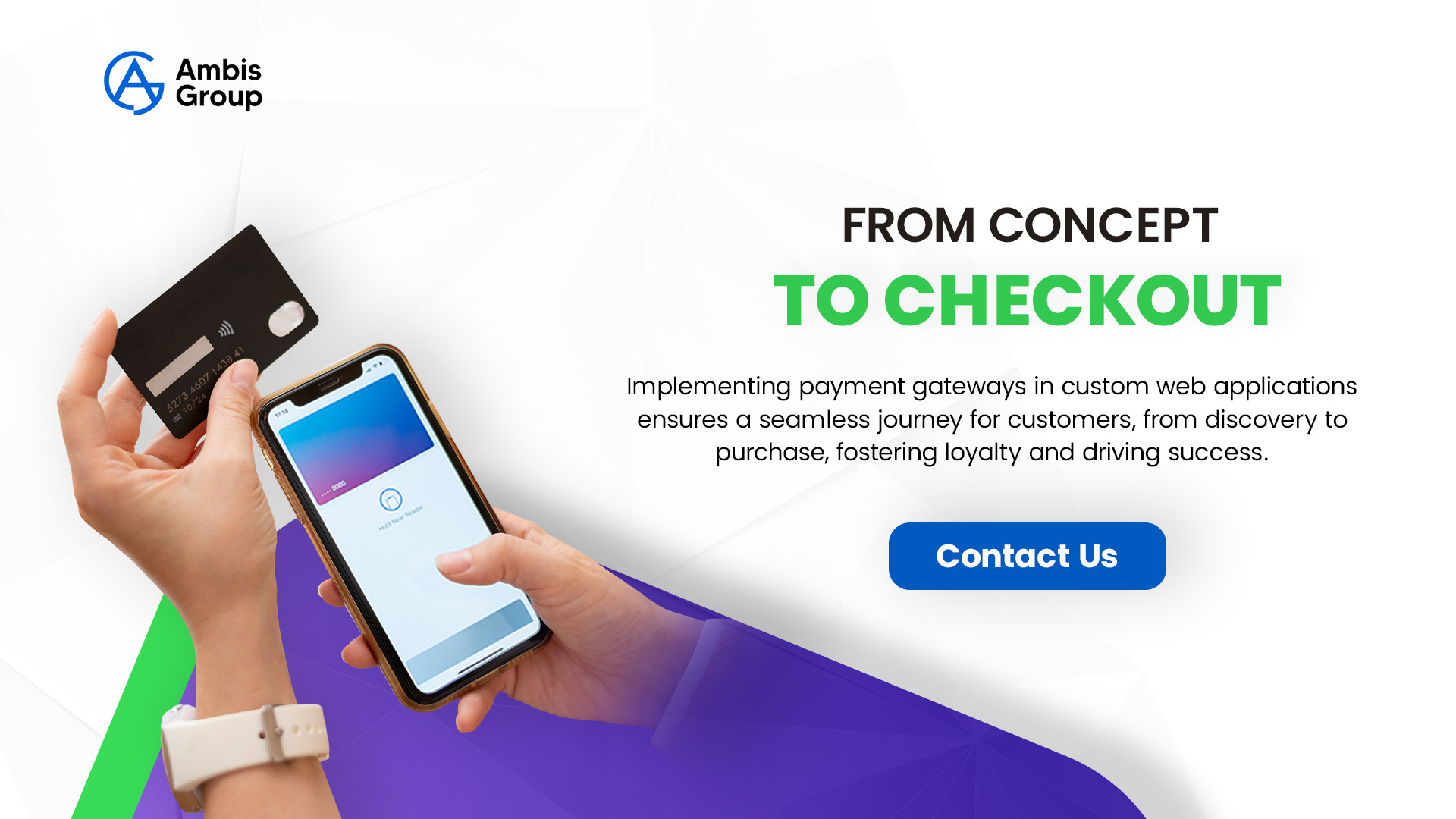Implementing Payment Gateways in Custom Web Applications

Implementing Payment Gateways in Custom Web Applications
In today's digital era, the ability to process payments online is essential for businesses of all sizes. Whether you're selling products, services, or subscriptions, integrating payment gateways into your web application is crucial for facilitating seamless transactions.
However, implementing payment gateways in custom web applications can be a daunting task, especially for developers who are new to the process.
In this comprehensive guide, we'll explore everything you need to know about integrating payment gateways into your custom web applications.
Understanding Payment Gateways:
Before diving into the technical aspects of implementation, let's first understand what payment gateways are and how they work. A payment gateway is a technology that acts as a mediator between merchants (sellers) and payment processors (banks or financial institutions). It securely authorizes and processes payment transactions, ensuring that sensitive information such as credit card details is encrypted and transmitted safely between the customer's browser and the merchant's server.
Choosing the Right Payment Gateway:
The first step in implementing payment gateways is choosing the right provider for your business needs. Factors to consider include transaction fees, supported payment methods (credit cards, PayPal, etc.), geographical coverage, security features, and integration complexity. Popular payment gateway providers include PayPal, Stripe, Square, Authorize.Net, and Braintree, among others. Analyze each provider carefully to ensure they meet your specific requirements.
Technical Implementation:
Once you've selected a payment gateway provider, the next step is integrating it into your custom web application. While the specific implementation may vary depending on the chosen provider and your technology stack, the general steps typically involve:
Account Setup: Create an account with your chosen payment gateway provider and obtain API credentials (e.g., API keys, secret keys, merchant IDs) necessary for integration.
Development Environment: Set up a development environment for testing and debugging your payment gateway integration. Make sure the development setup is nearly identical to the production environment.
Integration Strategy: Determine the integration strategy based on the capabilities of the payment gateway provider and your web application's architecture. Common integration methods include direct API integration, hosted payment pages, and JavaScript libraries.
Client-Side Integration: Implement client-side code to collect payment information securely from the user, such as credit card details, billing address, and CVV code. Ensure that the payment form is PCI-compliant to safeguard sensitive data.
Server-Side Integration: Develop server-side code to handle payment processing requests sent from the client side. This includes validating input data, creating payment requests, communicating with the payment gateway's API, and handling response callbacks asynchronously.
Error Handling and Security: Implement robust error handling mechanisms to gracefully manage exceptions, timeouts, and network failures during payment processing. Employ security best practices such as encryption, tokenization, and HTTPS to protect sensitive data from unauthorized access.
Testing and Debugging: Thoroughly test the payment gateway integration in both sandbox and live environments to ensure functionality, reliability, and security. Use logging and monitoring tools to track transactions and diagnose any issues that arise.
Documentation and Support: Document the payment gateway integration process, including API endpoints, request/response formats, error codes, and troubleshooting tips. Leverage the provider's documentation and support resources for assistance during development and maintenance.
Best Practices and Considerations:
- Security: Prioritize security throughout the integration process by adhering to industry standards such as PCI DSS compliance, encryption, and secure coding practices.
- User Experience: Optimize the payment flow for a seamless user experience, minimizing friction and enhancing conversion rates.
- Localization: Consider internationalization and localization requirements, including currency support, language translations, and regional payment methods.
- Compliance: Stay up-to-date with regulatory requirements and compliance standards relevant to online payments, such as GDPR, PSD2, and ADA accessibility guidelines.
- Scalability: Design your payment gateway integration to scale with the growth of your business, accommodating increased transaction volumes and feature enhancements over time.
Integrating payment gateways into custom web applications is a complex yet essential aspect of e-commerce and online business operations. By understanding the fundamentals of payment gateways, choosing the right provider, and following best practices for technical implementation, you can ensure secure, reliable, and user-friendly payment processing experiences for your customers. Remember to stay informed about emerging technologies and industry trends to continuously improve and optimize your payment gateway integration strategy.
In conclusion, mastering payment gateways requires careful planning, technical expertise, and a commitment to security and user experience. With the right approach and attention to detail, you can successfully implement payment gateways in your custom web applications and unlock the full potential of online commerce.